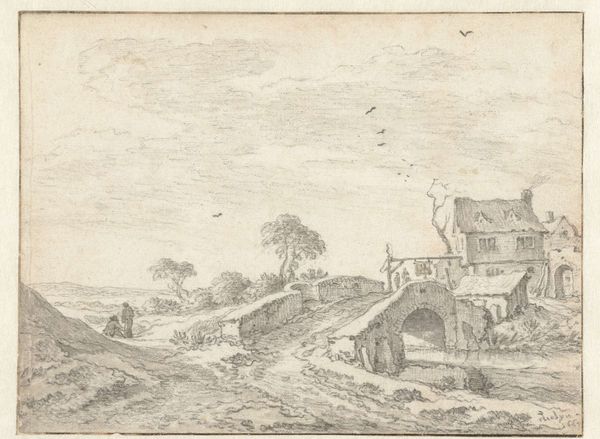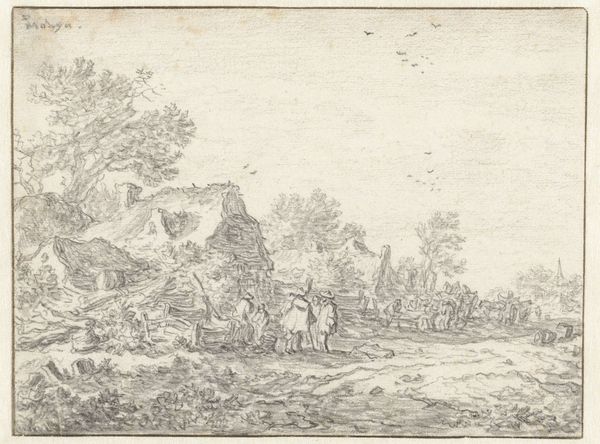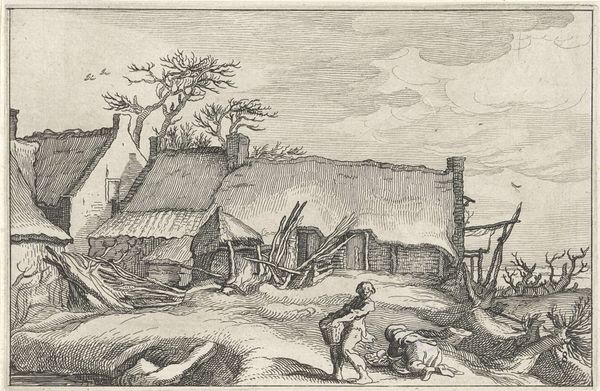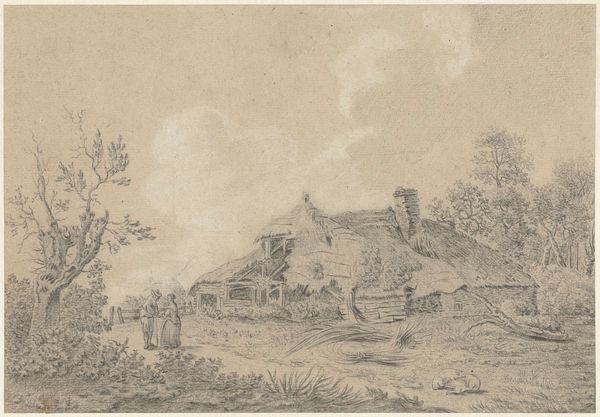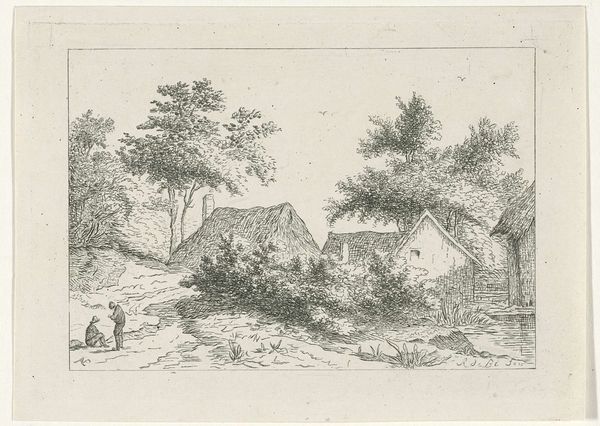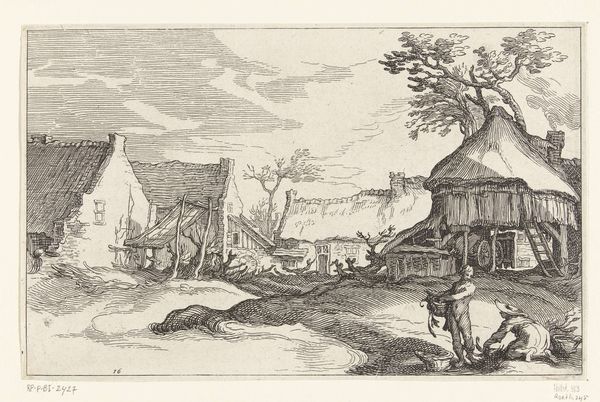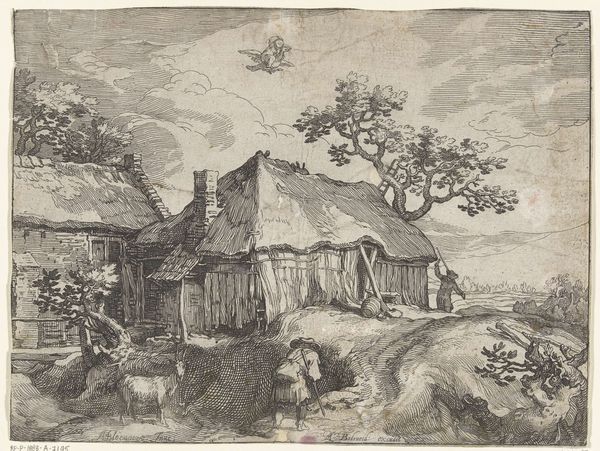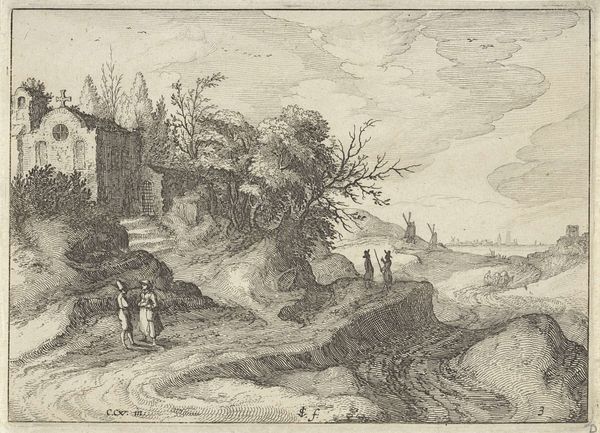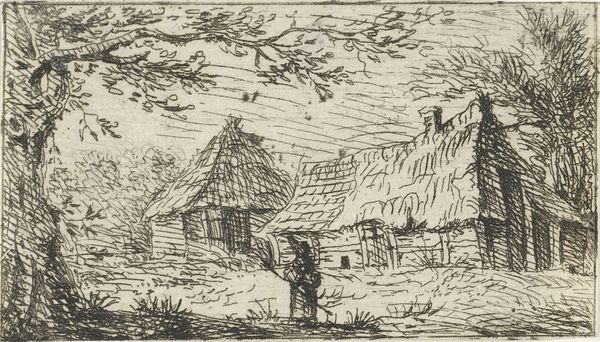
#
light pencil work
#
quirky sketch
#
pen sketch
#
pencil sketch
#
personal sketchbook
#
sketchwork
#
pen-ink sketch
#
pen work
#
sketchbook drawing
#
sketchbook art
Dimensions: height 91 mm, width 139 mm
Copyright: Rijks Museum: Open Domain
Curator: Ah, a charming village scene with a watermill by Anthonie Waterloo. It’s at the Rijksmuseum, and thought to be created sometime between 1630 and 1663. Look at that light pencil work. What are your first thoughts? Editor: Bleak. Despite the seeming pastoral setting, I’m struck by a profound sense of precarity. Thatched roof collapsing, figures huddled by the roadside. This isn't a celebration of rural idyll; it feels more like an observation of vulnerability. Curator: Interesting. I see it as the artist capturing a moment, almost a quick sketch in a personal sketchbook, like a visual diary entry. Editor: Visual diaries are never neutral. Waterloo would have certainly been aware of land enclosure, the increasing poverty of rural workers during that period and the way industrial infrastructure would alter the landscapes he captured. Do you feel that social anxiety manifests here? Curator: Possibly. Though, looking at his technique, I’m fascinated by his use of line, that delicate, almost trembling quality in the pen and ink sketch. It imparts a certain fragility, perhaps mirroring the precariousness you noted. I suppose I focus on the dance between light and shadow; for example the way the lines describe the texture of the thatching. It is incredible, isn’t it? Editor: The formal skill is undeniable, yet what narratives are validated through art production? Look at the roof—a signifier of shelter, quite literally disintegrating—but note that figures that may or may not have the means or rights to improve those conditions seem strangely unbothered. They are frozen in a scene that speaks to inequality! Curator: Hmmm. It makes you consider who benefits and how. For me though, the essence lies in its intimate scale. It's not grand, or imposing. Instead, it captures something transient. The way the sunlight dapples across the leaves, the suggestion of a breeze... things change, regardless. Editor: Indeed, even seemingly harmless village scenes like this become important historical records of power dynamics and evolving rural-urban landscapes, as you alluded. Thank you. I will not be looking at such things in the same light again anytime soon!
Comments
No comments
Be the first to comment and join the conversation on the ultimate creative platform.

